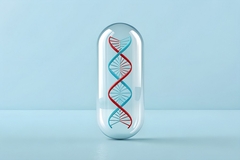NuCicer secures US$11.5M to scale high-protein chickpeas and accelerate breeding platform

NuCicer, a US company pioneering sustainable chickpea innovations, has closed a US$11.5 million Series A funding round to expand production of its high-protein chickpea varieties and advance its predictive breeding platform. The scaled production can help meet demand for nominally processed flour and protein ingredients.
The company’s new chickpea varieties contain up to 35% protein, compared to 21% in versions on the market, while also delivering high fiber and lower fat.
NuCicer says this nutrient-dense profile supports “two-for-one fortification strategies,” giving food brands a more straightforward, cleaner label solution for protein and fiber enrichment.
“This funding allows us to scale better chickpeas that enable delicious products, deliver grower value, and support consumer and planetary health,” says Kathryn Cook, co-founder and CEO of NuCicer. “We’re replacing heavily processed protein isolates with naturally nutrient-dense flours and milled protein ingredients.”
The investment round was led by Rhapsody Venture Partners, with participation from Leaps by Bayer, Illumina Ventures, Better Ventures, Stray Dog Capital, and a global food company.
Nutrient-dense and sustainable
NuCicer says its high-protein chickpea varieties can unlock simply milled protein and flour ingredients, delivering performance and nutrition. For example, manufacturers can use the ingredients to create protein-enriched staples or gluten-free pasta with minimally processed ingredients.
The company has worked with pasta, snack, and ingredient brands and manufacturers to demonstrate formulation flexibility and flavor profile.
Carsten Boers, managing partner at Rhapsody Venture Partners, notes that yellow pea and soy have been the primary plant-based protein sources on the market. “But they don’t deliver on taste or texture. Chickpeas are the natural successor, and NuCicer has the genetics and platform to lead that transformation.”
 The new chickpea varieties contain up to 35% protein, compared to 21% in versions on the market, with high fiber and lower fat.The company runs research trials for future high-protein chickpea varieties across the US (Montana and the Pacific Northwest), Canada, and the EU. Its licensing-based model will allow rapid scaling through strategic supply chain partnerships, enabling food brands to integrate next-generation ingredients without disrupting existing infrastructure.
The new chickpea varieties contain up to 35% protein, compared to 21% in versions on the market, with high fiber and lower fat.The company runs research trials for future high-protein chickpea varieties across the US (Montana and the Pacific Northwest), Canada, and the EU. Its licensing-based model will allow rapid scaling through strategic supply chain partnerships, enabling food brands to integrate next-generation ingredients without disrupting existing infrastructure.
Moreover, the chickpeas reach maturity around 10–20 days earlier than conventional chickpeas, which reduces late-season weather-related risks and the need for chemical desiccants.
NuCicer has planted over 2,500 acres in 2025 and plans to expand tenfold by 2026.
“Our operation is excited to partner with NuCicer as a grower of its innovative, high-protein chickpeas,” says Rick Bronec, a Montana grower. “This type of innovation will help create healthy food and provide domestic demand for a crop that improves our soil and resiliency as a farm business family.”
Legumes for nutrition
Ongoing nutrition research supports the addition of legumes like chickpeas and beans to a healthy diet for their fiber, protein, and micronutrient content. They offer a more affordable and sustainable alternative to various meat products.
For example, researchers suggest consuming beans and chickpeas is responsible for a higher intake of shortfall nutrients like fiber, potassium, choline, magnesium, iron, and folate. Moreover, a study found that chickpeas and lentils provide better zinc and iron absorption than oats and wheat.
Recently, scientists suggested that consuming a daily cup of black beans or chickpeas could benefit heart and metabolic health. Their 12-week study found that people with prediabetes showed improved cholesterol levels when eating chickpeas.
US-based food scientists are also exploring plant-based protein foods, such as tempeh from dry chickpeas and peas, to offset the negative effects of a typical Western diet. The foodtech company ChickP has been combining chickpea protein with dairy to develop hybrids that are close to dairy in flavor, color, and texture but more sustainable.












